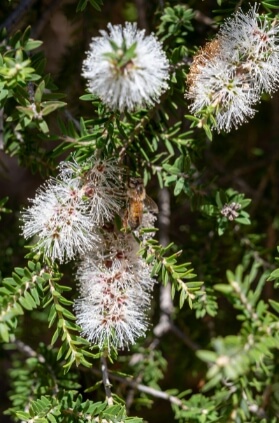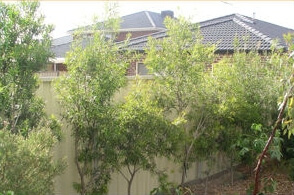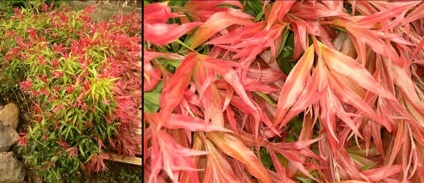Callistemon salignus is a bottlebrush that is probably the least spectacular of the bottlebrushes when in flower. Commonly known as willow bottlebrush.
The reason why I’ve included it here is because it has so many other special qualities. It grows fairly vigorously, it is very drought tolerant, can be grown in heavy soils that don’t drain very well and the new growth is a dark red colour that can make the plant quite attractive when putting on new growth.
More...
Growing Callistemon salignus

Callistemon salignus grows into a tree of up to 15m or can easily be pruned into quite an attractive hedge. I’ve just planted a line of these along my fence line to grow as a native hedge. I chose this plant particularly for this purpose because of the qualities mentioned above.
The plants have been in the ground now for about 2 ½ years now and most have already grown to over 2m. I’ve also been tip pruning them periodically as well so that they bush out nicely into a hedge.

This Callistemon salignus will eventually grow into a dense hedge and windbreak.
The other thing about the position I’ve chosen for these trees is it’s along the northern boundary which means that these trees are my first line of defence when the strong hot northerly winds blow during summer.
During the summer just gone we had 5 days in a row when the temperature was 40 – 45 C and another day that was 46 C with strong hot winds up to 40kts. These trees just took it in their stride and showed no signs of stress whatsoever.
Callistemon salignus 'Great Balls of Fire'

Callistemon salignus 'Great Balls of Fire'
Callistemon salignus also comes in a smaller variety as well that grows to about 1-2m. This one is great for a small hedge and for some reason you rarely see it in nurseries.
It’s called Callistemon salignus 'Great Balls of Fire' and has the same red appearance as the tree when putting on new growth. It is well and truly worth a try for someone who was to grow a low, tough, drought tolerant hedge.
Published on June 23, 2023 by AGT
Last Updated on January 28, 2024




